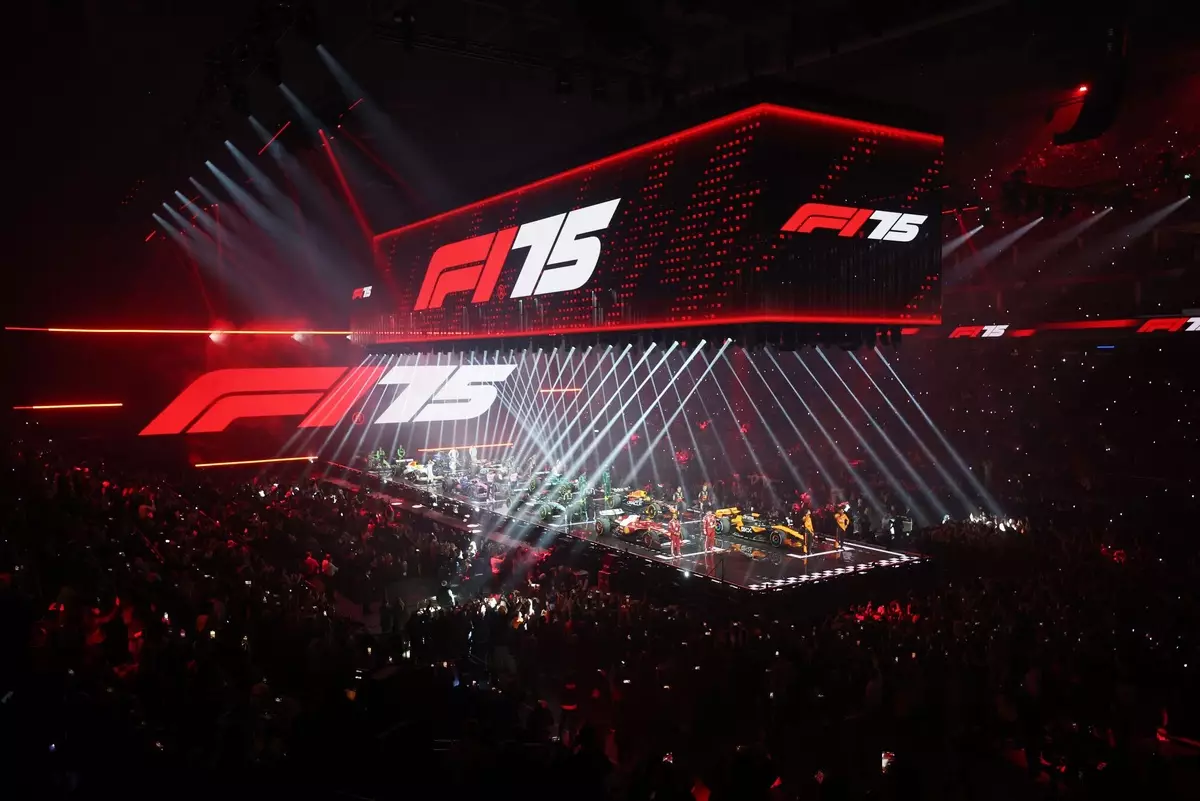The recent unveiling of the F175 livery at London’s O2 Arena marked a significant departure from traditional Formula 1 (F1) practices, blending the sport’s high-speed heritage with entertainment. The event, hosted by comedian Jack Whitehall, was infused with a splash of fanfare aimed at a broader audience. This approach highlighted the dichotomy between hardcore F1 fans and the tantalizing allure of a more glamorous spectacle. As the night unfolded, the atmosphere oscillated between euphoric celebrations of Lewis Hamilton and a cacophony of boos directed at other prominent figures, particularly Christian Horner and Max Verstappen. However, the loudest jeers resonated when the FIA, the sport’s governing body, was mentioned—an emblematic reflection of the tensions simmering within the F1 community.
Critiques emerged in waves leading up to the event, centered not only around the financial burden imposed on the teams—where estimates for Red Bull’s seven-minute showcase reached an eye-watering £800,000—but also around the potential crowding of traditional PR roles and sponsor engagements. Many purists lamented that this extravagant unveiling strayed too far from the core values of motorsport. However, it is essential to recognize that the essence of this spectacle was not designed for them. Instead, F1 aimed to align itself with a younger, more diverse audience by showcasing its stars in a city setting, thus attempting to bridge the gap between die-hard fans and casual viewers. With ticket prices allowing access to those who may never experience a live race, the formula for success appeared to center on audience inclusion and accessibility.
Hamilton, donning Ferrari red for the first time, was undoubtedly the star of the evening, capturing minds and hearts alike. The adoration poured out for the McLaren team also underscored the universal appeal of certain brands in the sport. Yet, what truly stole the limelight—and possibly added a dash of drama—was the pantomime that ensued as other speakers took to the stage. Horner faced ridicule in a manner reminiscent of theatrical performances, which, although amusing to some, may have been uncomfortable for him. His ability to brush off this backlash, paired with the support of his wife, highlighted his attempts to cultivate a villainous persona, exacerbated by the popular Netflix series, “Drive to Survive.” This crossover between sports and entertainment serves to not only humanize these individuals but also revitalize their image in the public eye.
The dynamic between drivers, particularly the ongoing friction between Verstappen and George Russell, provided an undercurrent of tension throughout the event. Whitehall’s quip—“Cheer up Max, we didn’t sit you next to George Russell”—served as a humorous reminder of their past confrontations, while simultaneously reaffirming the importance of rivalries in F1’s narrative. The event thrived on these relationships, igniting memories for avid fans while drawing in newcomers intrigued by the personal stories behind the sport.
While the presentations showcased varying degrees of flair, some stood out more than others. The Aston Martin team’s homage to its James Bond lineage, the nostalgic nod from McLaren to its championship-winning history, and Red Bull’s slick presentation all captured the audience’s attention. However, criticism abounded regarding the lack of in-depth representation of lesser-known categories like Formula 2 or Formula 3 and the missed opportunity to hear a live car roar to life—a thrilling experience in events like MotoGP. Nevertheless, the highlights and misses reveal the complex balance that F1 is attempting to strike, catering to both connoisseurs and novices alike.
Despite the critiques, this event undeniably signaled a transformative approach within F1. While traditionalists might mourn the departure from custom, the success of the launch at the O2 Arena illustrates the potential of F1 to innovate, engage new demographics, and alter its long-standing image. It is crucial for F1 to continue on this path of evolution—encouraging entertainment while honoring its roots. There will always be room for improvement in the quest for the ideal presentation, but ultimately, F1 deserves commendation for expanding its horizons. By striving to captivate a fresh audience and enlivening the often-staid car launch ritual, Formula 1 successfully navigates toward a vibrant, inclusive future.

